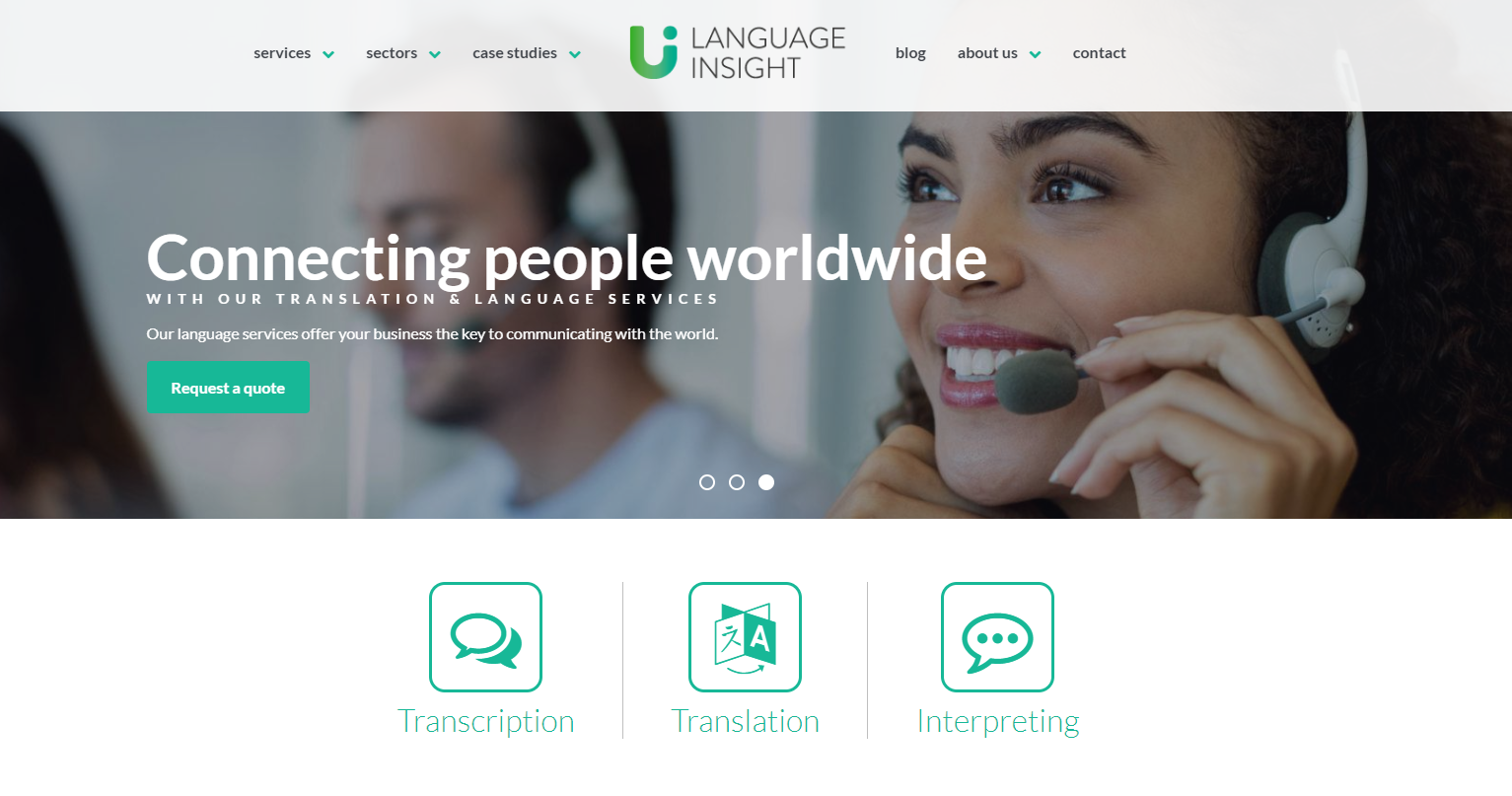This week, we are glad to present an interview with our translation partner Language Insight, a full-service language provider with locations around the world.
1. Your company started in the north of England, why did you expand and open the office in New York and London?
Language Insight started life in the North of England and quickly opened a second office location in central London. This allowed Language Insight to be in direct contact with our London-based clients and also attract a wider cross section of talent to the company.
Then we opened an office in United States, specifically New York City, again with the same purpose of working closely with our increasing US clients. This would also allow us to cover US timelines together with the UK offices.
“We believe that by immersing ourselves directly in the markets in which we operate, we can better understand and serve our clients needs.”
2. How have you changed as a company since you started in 2008?
We started out as Transcription Global, a digital transcription service located from England. Our reputation quickly grew within the industry and in 2013 we rebranded as Language Insight to reflect the full range of language services we now offer to our clients, including translation and interpreting, as well as many others including DTP, digital translation services and voiceovers.
“Language Insight has developed significantly over the years because we believe in continuous improvement, both in our services and our staff. This has resulted in Language Insight being awarded ISO 9001 Quality Management Systems and ISO 27001 Information Security Management Systems, enabling clients to trust both the quality of our services and its security.”
3. Do you have a timeline when you will open more offices in Europe and Asia (and where)?
Language Insight have iminent plans to open a central European office early 2019 and then further plans to look towards Shanghai, China. Again this will allow ‘follow the sun hours’ with continuous working timelines over any given 24 hour period.
4. What languages does your company translate the most? Do you have a language of expertise?
We predominantly work in French, German, Spanish, Italian, Japanese, Chinese, Brazilian Portuguese, Nordics, but also work in many others.
5. How often do you translate websites?
Demand for website translation has increased recently as more and more of our clients are looking to expand globally. Right now, we are working on website translations for a client in the medical sector, one in the food industry and an internationally recognised IT firm, to name a few.
6. What kinds of WordPress websites do you translate the most often?
Our clients come from a variety of sectors and industries and cover everything from market research to manufacturing and advertising to legal.
One of our long-standing clients comes to us regularly with new and updated website content which is used for the European Union.
7. What challenges have you come across when translating WordPress websites?
Our biggest challenge in translating WordPress websites is getting the clients to understand how easy the whole process actually is!
“In the past, website translations have been cumbersome and required a lot of technical know-how. Our partnership with WPML has proved to some of our more sceptical clients that this is no longer the case.”
8. How do you ensure that translations are accurate and match the tone of the website?
Our experienced translators are skilled in marketing as well as the subject matter they are translating. They carefully review the source material and read through any briefs or guidelines from the client or marketing agency before starting work on the project.
Our native in-house and in-country linguists proofread the text line by line before our in-house QA teams review the format and layout, run various QA checks and sign off the files. All our linguist teams make use of our state-of-the-art translation technology to ensure terminology and nuances are accurately and consistently translated.
9. Could you give some examples of recent WordPress translations that you are most proud of and why?
As a company we are relatively new to using plugins and tools like WPML to assist with website translations. In the past we have translated wordpress websites manually which then took longer to transition.
We are currently translating our own WordPress website via WPML and hope to launch it in German in the very near future.
“Using WPML ourselves helps us to fully understand the process enabling us to iron out any teething problems, ensuring that our clients’ WordPress website translations run smoothly.”
Are you interested in taking your translations to the next level by using a professional translation service?
It’s easy:
- Make sure to have WPML Translation Management and WPML String Translation activated in your site.
- In the WordPress admin, go to the WPML -> Translation Management page and click the Translation Services tab.
- Activate the translation service of your preference and authenticate it. For this, you will need to request an API Token at the service’s website.
- Go to the Translation Dashboard on the WPML -> Translation Management page and select content to send for translation.
- Finally, go to the Translation Basket tab, select to translate it using the selected translation service and send it for translation.
You can find the full instructions on the page about sending content for translation.




